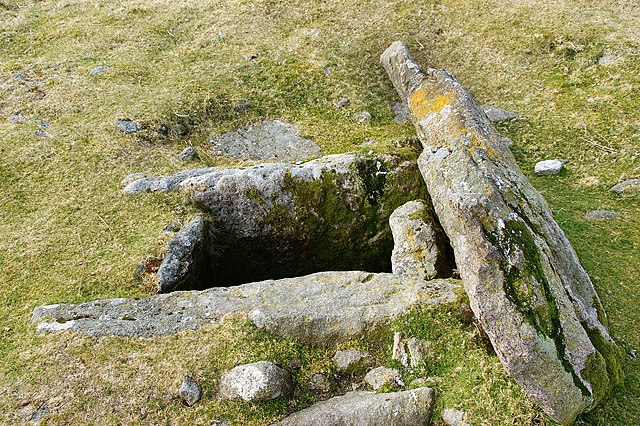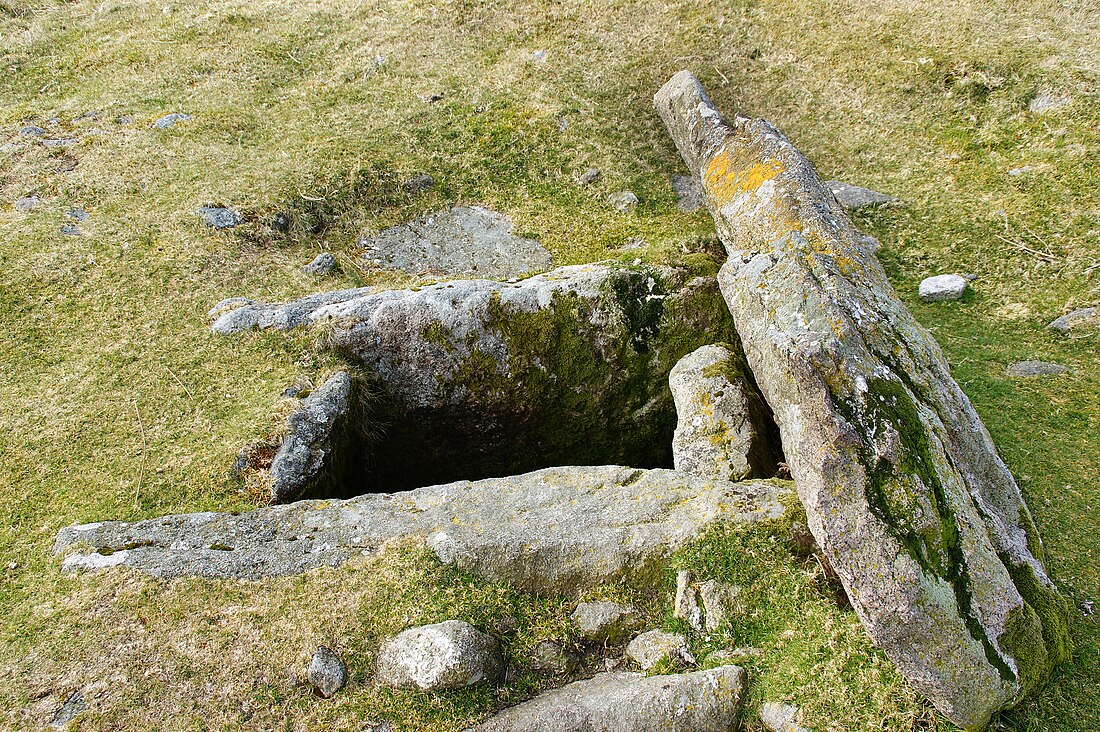Top Qs
Timeline
Chat
Perspective
Kistvaen
Type of burial chamber From Wikipedia, the free encyclopedia
Remove ads
A kistvaen or cistvaen is a tomb or burial chamber formed from flat stone slabs in a box-like shape. If set completely underground, it may be covered by a tumulus.[1] The word is derived from the Welsh cist (chest) and maen (stone). The term originated in relation to Celtic structures, typically pre-Christian, but in antiquarian scholarship of the 19th and early 20th centuries it was sometimes applied to similar structures outside the Celtic world.

You can help expand this article with text translated from the corresponding article in German. (May 2014) Click [show] for important translation instructions.
|
The examples and perspective in this article may not represent a worldwide view of the subject. (May 2014) |


One of the most numerous kinds of kistvaen are the Dartmoor kistvaens. These often take the form of small rectangular pits about 3 ft. (0.9 m) long by 2 feet (0.6 m) wide. The kistvaens were usually covered with a mound of earth and surrounded by a circle of small stones. When a body was placed in the kistvaen, it was usually lain in a contracted position. Sometimes however the body was cremated with the ashes placed in a cinerary urn.
Remove ads
Kistvaens and Celtic saints
Kistvaens are also found associated with holy sites or burial places of early Celtic saints, who are often semi-legendary. Saints associated with kistvaens include Callwen daughter of Brychan, Geraint,[2] Begnet,[3] and Melangell.[4] Foundation remains of stone slab- or gable-shrines, or the cella memoriae of Mediterranean origin, may sometimes have been misunderstood in an earlier era of scholarship as a kistvaen, and the subject is complicated by this "woolly nomenclature."[5]
Remove ads
See also
- Dolmen, a type of above-ground burial chamber
References
External links
Wikiwand - on
Seamless Wikipedia browsing. On steroids.
Remove ads
